 A view of what each kit contains - trim ring, spigot with window, butyl, and the drill guide. |
 A view of the original portlight inside the head with the trim ring removed. |
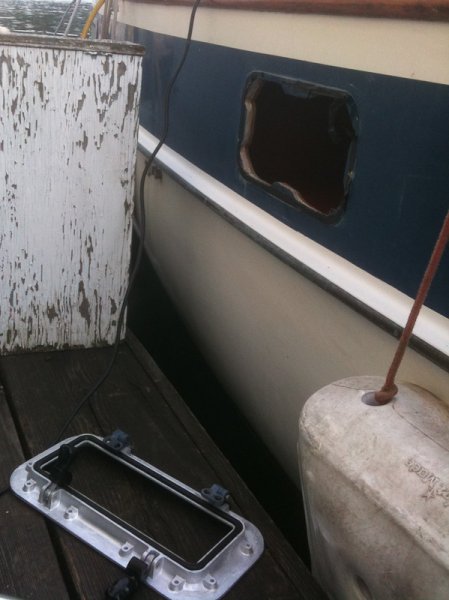 The original frame has been removed and you can see the raw hole in the hull. |
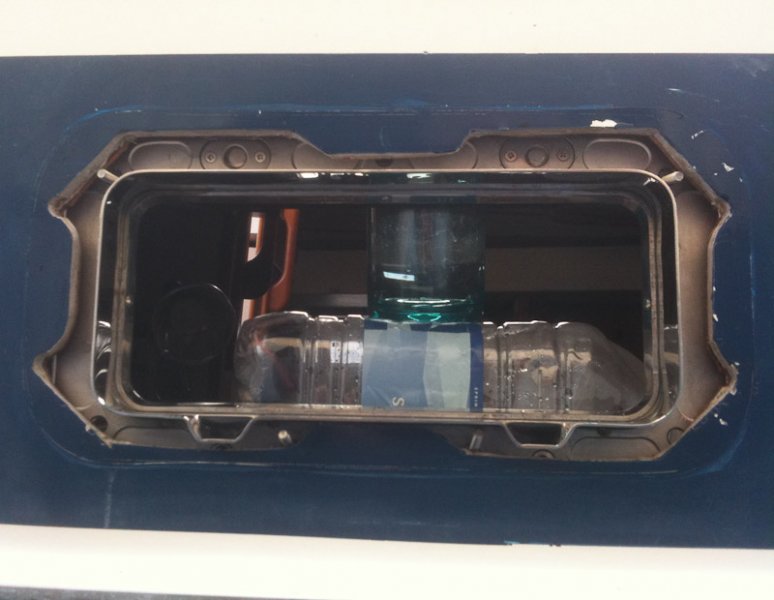 A view from the outside of the new portlight fit into the opening of the old portlight. |
 A view from the inside showing the opening of the old portlight. |
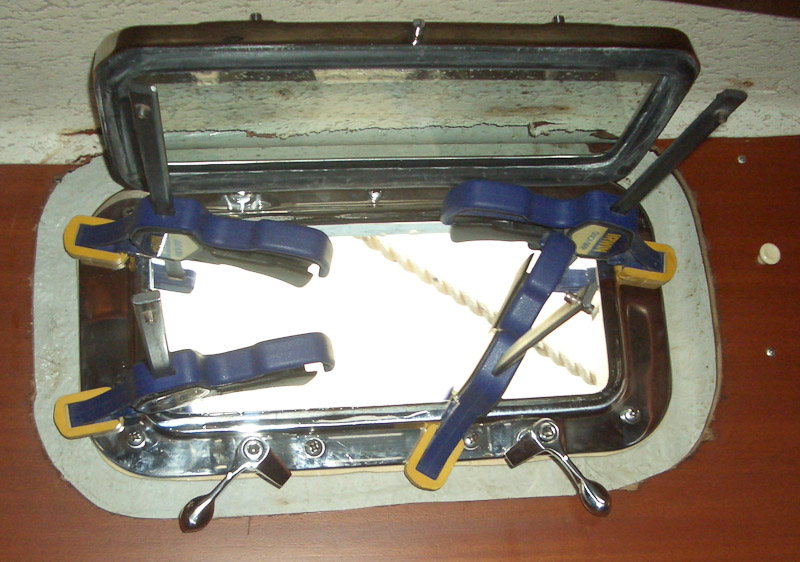 Compressing the butyl between the spigot (interior part of the portlight) and the exterior trim ring using clamps. |
 A shot of the new portlights from the exterior. |
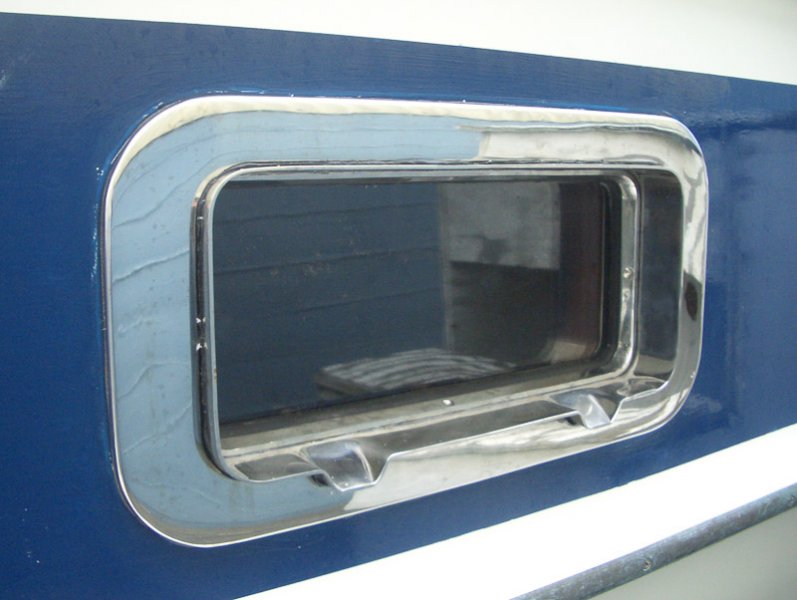 A closeup of one of the new portlights. |
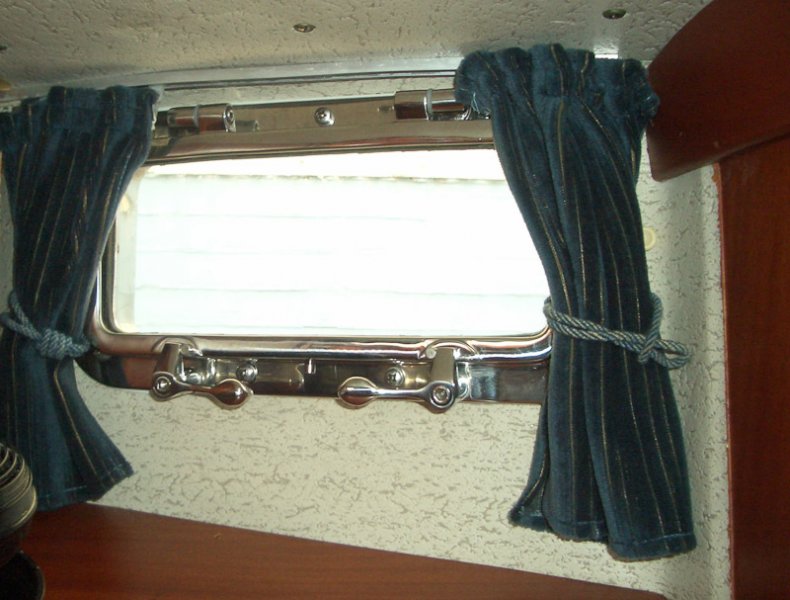 A view of my shiny new portlight in the head. |